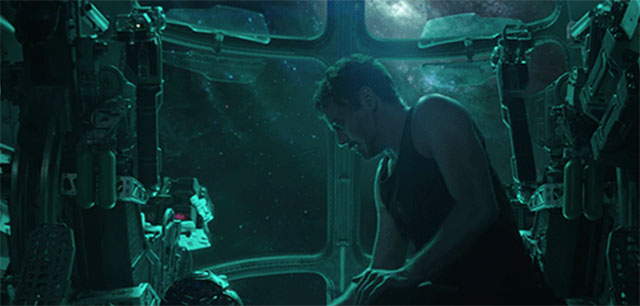
Looking to binge the entire Marvel Cinematic Universe (MCU)? We appreciate your commitment, but you need to put some style on it.
Fortunately, we're here to help with our guide to the blockbusting franchise in chronological order. Want to know how to separate your Captain Americas from your Captain Marvels? Curious to know how the different movies feed into one another? Scroll down, read on and find out.
1. Captain America: The First Avenger (2011)
The cornerstone of the Avengers initiative, Steve Rogers' inception occurs during the height of World War II in 1944. Chris Evans' weedy yet plucky hero is transformed into the muscular Captain America and heads off to fight Nazi tyranny. During the climax, he valiantly crash-lands into the ice to prevent the all-powerful Tesseract, later revealed as one of the infinity stones (Space Stone), from falling into the wrong hands.
Several decades later, Steve is unthawed by Nick Fury (Samuel L. Jackson) who, in the years immediately prior to Steve's awakening, has got S.H.I.E.L.D. established.
2. Captain Marvel (2019)
Brie Larson's eponymous superhero crash-lands on Earth in 1995 – the era of Blockbuster Video and dial-up modems. In fact, Captain Marvel begins life with the adoptive Kree name Vers, and she serves the alien race in battle.
However, she's troubled by memories of an apparent past life as a human air force pilot named Carol Danvers. She's assisted on her journey of self-discovery by an appreciably younger Nick Fury in his pre-S.H.I.E.L.D. days (Jackson de-aged via CGI).
3. Iron Man (2008)
Let's skip forward several years to the beginning of Tony Stark's tenure as Iron Man. The quick-witted Stark (played to perfection by Robert Downey Jr.) is initially something an amoral war profiteer whose company produces weapons used in Middle-East combat.
But after being kidnapped, Tony develops a conscience and develops the prototype Iron Man suit. Later, he's greeted by S.H.I.E.L.D. operative Nick Fury who offers a teaser of the Avengers initiative.
4. Incredible Hulk (2008)
The post-credits scene of the solo Hulk movie shows us a meeting between Tony Stark and Thaddeus Ross (William Hurt). That, at the very least, establishes the movie as taking place after the first Iron Man. Or, you could see it as taking place after Iron Man 2 as well.
To be honest, the events of Incredible Hulk have a negligible impact on the early days of the MCU, as Edward Norton gives his only performance as the title character.
5. Iron Man 2 (2010)
As mentioned, one could easily swap the chronology and have Iron Man 2 immediately take place after the first movie. In this one, Tony battles a consortium of villains, including Mickey Rourke's Whiplash and Sam Rockwell's Justin Hammer.
The film further develops Stark's union with Nick Fury, but more significantly, it introduces Scarlett Johansson's Natasha Romanoff/Black Widow as a kick-ass S.H.I.E.L.D. agent. And the post-credits scene involving the discovery of a famous hammer in the desert sets up the next movie...
6. Thor (2011)
This is where we discover how hammer Mjolnir ended up in the arid wastes of the New Mexico desert. It was, of course, cast out of Asgard by ruler Odin (Anthony Hopkins), who also angrily banishes his vainglorious son Thor (Chris Hemsworth) to the same area. While S.H.I.E.L.D. takes an active interest in Thor's prized possession, the outcast Asgardian learns the value of humility and love from scientist Jane Foster (Natalie Portman).
And the post-credits scene anticipates the possession of Erik Selvig (Stellan Skarsgard) by Thor's tricksy brother Loki (Tom Hiddleston) in Avengers Assemble.
7. Avengers Assemble (2012)
Joss Whedon's triumphant ensemble movie picks up where Thor left off. At the very start, Loki emerges from the Bifrost onto Earth, wreaking havoc and stealing the Tesseract, unthawed after the climactic events of Captain America: The Winter Soldier.
All of the heroes introduced in the prior solo movies, Iron Man, Captain America, Thor, Hulk (played by new incumbent Mark Ruffalo) and Black Widow must now join forces and so battle.
8. Iron Man 3 (2013)
Tony Stark's self-contained Iron Man story arc is wrapped up in this movie. Clearly rattled by his battle with the Chitauri during the Avengers Assemble climax, Tony decides it's time to hang up the Iron Man mantle. But not before he's antagonised feared villain The Mandarin (Ben Kingsley), leading to the destruction of Tony's home, and forcing the title character into hiding.
Of course, in a controversial twist, the alleged Mandarin is an actor named Trevor – the real one is vengeful scientist Aldrich Killian (Guy Pearce).
9. Thor: The Dark World (2013)
The Thor sequel is a pretty self-contained story that has relatively little bearing on what follows. There are call-backs to the events of Avengers Assemble, chiefly via the returning Jane Foster.
She was absent from Assemble, but angrily slaps Loki for the destruction he wrought on the city. She's also mad at Thor for not having kept in touch in the years since the first movie, but romance inevitably blossoms again come the end.
10. Captain America: The Winter Soldier (2014)
This critically acclaimed sequel, the first MCU movie from the Russo brothers, continues Steve Rogers' integration into the 21st century. The Winter Soldier picks up the mantle from The First Avenger, bringing back the threat of sinister Nazi organisation Hydra, which has now infiltrated S.H.I.E.L.D. He's also pitted against former friend Bucky Barnes (Sebastian Stan), now a brainwashed operative under the enemy's control.
Fortunately, Steve has Black Widow and Nick Fury on his side to combat the ruthless Alexander Pearce (Robert Redford), eventually leading to S.H.I.E.L.D.'s collapse.
11. Guardians of the Galaxy (2014)
It's off to space for the first of the Guardians movies, both of which were directed by James Gunn. Chris Pratt gives a winning performance as Peter Quill/Star Lord, the adoptive leader of a group of intergalactic misfits, who carries a rocking playlist wherever he goes.
Guardians re-introduces the Collector (Benicio Del Toro) from the chronologically earlier Thor: The Dark World. And, in the post-credits scene, it reinforces the looming threat of Thanos (played for the first time by Josh Brolin).
12. Guardians of the Galaxy Vol. 2 (2017)
Both Guardians movies are pretty self-contained, and can be viewed one after the other. This time, Star Lord and the gang run into the former's dad, Ego (Kurt Russell), whose apparently beatific exterior conceals dark depths.
The consequences of Vol. 2's fifth and final post-credits scene are, as yet, unrealised: it alludes to the presence of Adam Warlock, a near-indestructible super-being who's yet to make an official MCU appearance. However, it's been confirmed that Adam Warlock will be portrayed by The Revenant and The Maze Runner actor Will Poulter.
13. Avengers: Age of Ultron (2015)
The emotional and psychological ramifications of Avengers Assemble continue to weigh heavily on the team in Joss Whedon's follow-up. With S.H.I.E.L.D. destroyed, it becomes clear that the Avengers are increasingly accountable for their actions. And even though Tony is still tortured by the whole nuclear bomb through a worm hole, it doesn't stop him from accidentally creating evil sentient A.I. Ultron (James Spader).
More significantly, the climactic destruction of the European city Sokovia will hasten the break-up of the Avengers team in later movies.
14. Ant-Man (2015)
The world of thief turned shrinking superhero Scott Lang (Paul Rudd) is a refreshing palate-cleanser. Forget about saving the world and being all doom-laden with it: all the quick-witted Scott wants is to see the daughter from whom he's separated.
Ant-Man introduces other key MCU figures too, in the form of scientist Hank Pym (Michael Douglas) and Pym's daughter Hope van Dyne (Evangeline Lilly), later to become superhero The Wasp.
15. Captain America: Civil War (2016)
The devastation in Sokovia bears bitter recriminations and consequences in this MCU epic. For the first time, the Avengers begin to splinter on the issue of right and wrong. Tony Stark believes the group should be held accountable for their actions, and ought to sign the Sokovia accords; Steve Rogers, wary of government authority following The Winter Soldier, refuses.
The movie is pivotal for introducing two new MCU heroes: T'Challa/Black Panther (the late Chadwick Boseman) and Peter Parker/Spider-Man (Peter Parker), both of whom later get their own solo movies. And, in the end, Steve takes fugitive friend Bucky to T'Challa's nation of Wakanda, an important step in the development of the MCU.
16. Black Panther (2018)
The extraordinary, vibranium-rich land is the basis of the Black Panther solo movie, directed with gusto by Ryan Coogler. Having hidden from the wider world for so long, Wakanda faces its deadliest threat when insurgent villain Eric Killmonger (Michael B. Jordan) challenges Prince T'Challa's royal supremacy, in the process seeking the throne for himself.
Wakanda is later one of the key locations for battle in Avengers: Infinity War. At the end of Black Panther, we see Bucky having recuperated with the help of Wakandan gadgets expert Shuri (Letitia Wright), setting up the later scene in Avengers: Infinity War when he gets his new arm.
17. Doctor Strange (2016)
Benedict Cumberbatch plays the titular Sorcerer Supreme in this fantasy-inflected MCU adventure. Doctor Strange, in fact, starts life as Stephen Strange, an arrogant neurosurgeon whose involvement in a car accident sends him on a wondrous. Stephen travels to Nepal where he's taught to engage with parallel dimensions by the Ancient One (Tilda Swinton).
Both characters would later prove critical in the battle against Thanos in Avengers: Infinity War and Endgame. And the post-credits scene tees up Thor's quest to find his dad Odin in the later Thor: Ragnarok.
18. Spider-Man: Homecoming (2017)
Peter Parker made his Avengers debut in Captain America: Civil War, but he's sent back to school in his debut solo movie. Tom Holland's likeable superhero is essentially put on comic book furlough by mentor Tony Stark, encouraged to use his powers not for world-saving, but on a local neighbourhood basis.
Of course, when the villainous Adrian Toomes/Vulture (Michael Keaton) rises up, Peter fully embraces the kind of heroic abilities that will serve him well in the later Avengers: Infinity War and Endgame.
19. Black Widow (2021)
Yes, we know that Black Widow is still some way off. It's scheduled for release (at the time of writing) on 7th May 2021, but you can still manoeuvre it into your chronological MCU timeline.
Some 10 years after Scarlett Johansson made her MCU debut in Iron Man 2, she's finally getting her own solo movie. Black Widow, directed by Cate Shortland, takes place between Civil War and Infinity War, as Natasha travels back to Russia to confront her shadowy past, including the mysterious 'Red Room'. It's the movie that kicks off Marvel Phase Four.
20. Thor: Ragnarok (2017)
Taika Waititi's deliriously funny Thor movie strikes a somewhat different, far goofier tone from the preceding two films. For the most part, Ragnarok is happy to amble along as its own self-contained story, but the climactic moments are important in setting up Avengers: Infinity War.
We see the newly one-eyed Thor and his brother Loki trading some very Waititi-esque jibes, before Thanos' spaceship looms into view. This is where Infinity War's opening scene takes place, in the process spelling doom for Loki.
21. Avengers: Infinity War (2018)
The world assembled to witness the catastrophic events of Avengers: Infinity War. Too often, we're witness to the Avengers finishing off a disposable baddie with little more than a shrug or a quip. However, the threat posed in this film had been six years in the making: Thanos, whose appearance was first teased at the end of 2012's Avengers Assemble.
All of the disparate chronological story threads in the MCU now take on greater urgency, as the world, and indeed the entire universe, faces mortal ruin. And it all takes place with the snap of the fingers in the franchise's darkest, most despairing moment.
22. Ant-Man and The Wasp (2018)
The Ant-Man sequel is, like its predecessor, relatively untroubled by all the warmongering and doom-laden carnage of its MCU brethren. That is, until we get to the climax. When Paul Rudd's shrinking superhero Scott Lang enters the Quantum Realm, a place where the human perception of time ceases to exist, he can't anticipate the chaos to come.
While he's in there, Thanos engages in his snap, obliterating half of all life in the universe, leaving Lang stranded. This cues up Scott's role as a hidden weapon in the Avengers arsenal in Endgame.
23. Avengers: Endgame (2019)
Avengers: Infinity War was just the first half of a wider story. In 2019's Endgame, some 11 years' worth of MCU storytelling reached its extravagantly emotional pay-off, not least in the form of several character departures.
The movie resolves the arc of Tony Stark, the godfather of the MCU (although not in a chronological sense), while also bidding farewell to Black Widow, necessitating her solo movie as taking place earlier in the timeline. And we also movingly say goodbye to Steve Rogers, whose climactic dance with Peggy (Hayley Atwell) is one of the most beautifully understated moments in the franchise.
24. Spider-Man: Far From Home (2019)
Peter Parker's second solo movie occupies the post-snap period of the MCU, when 50% of all life in the universe has been restored. We've got Tony's command of Thanos' infinity stones to thank for that, albeit at the cost of his own life. Amusingly, this means that half of everyone in Peter's school, himself included, has been restored five years later without having aged.
The movie culminates with Peter's identity being exposed to the wider world, while he's also framed for the death of villain Mysterio (Jake Gyllenhaal).
25. Shang-Chi and the Legend of the Ten Rings
Simu Liu makes for a terrifically likeable hero in this mythological extension of the MCU, directed by Destin Daniel Cretton. Shang-Chi breaks down boundaries with its representation of the first Asian superhero in the franchise, allowing for all kinds of sumptuous, Crouching Tiger, Hidden Dragon-aping set design and costumes.
The titular Shang-Chi must square up to his nefarious father, Wenwu (the magisterial Tony Leung), better known as The Mandarin, a classic villain from the Marvel comics. Awkwafina provides her usual scene-stealing support as Shang-Chi's loyal best friend Katy.
The post-credits scenes, one linking the title character to Hulk and Captain Marvel, the other focusing on Shang-Chi's sister Xialing (Meng'er Zang), clearly point towards future MCU developments.
26. Eternals
In the wake of Thanos' snap, and the subsequent restoration of all life in the universe, a group of ancient superbeings must take stock of their own lives. The Eternals were created by the all-powerful Celestials and placed incognito on Earth to watch over mankind, as human beings developed from animalistic savagery to sophisticated wizardry.
However, the Eternals are expressly forbidden to interfere in man-made conflicts (including the all-encompassing fight against Thanos), unless it involves their deadly enemies the Deviants, who suddenly re-appear on Earth for the first time in centuries.
27. Spider-Man: No Way Home
Now canonised as one of the biggest box office hits in the Marvel Cinematic Universe, No Way Home can be appreciated for the nostalgic overload it is. Tom Holland's Peter Parker is so desperate for the world to forget he's Spider-Man that he calls on the services of Doctor Strange.
The latter unwittingly unravels the threads of the time-space continuum, opening our eyes to the possibilities, both wondrous and terrifying, of the multiverse. This allows the movie to joyously mix up the various Spider-Men from their respective realms, Holland joining Tobey Maguire and Andrew Garfield for a superhero team-up celebrated the world over.
28. Doctor Strange in the Multiverse of Madness (released 6th May)
The Doctor Strange sequel forces the Sorcerer Supreme to deal with the No Way Home fallout. Having barely restored the parameters of space and time, Doctor Strange must now grapple with the consequences of his time-splicing decision to help Peter Parker.
The multiverse really opens the taps this time as Strange grapples with his evil alternate, all the while as the haunted Wanda Maximoff/Scarlet Witch (Elizabeth Olsen) seeks her own measure of redemption.
Excitingly, this is the Marvel Phase Four movie that best anticipates where the franchise is going next. We know that Patrick Stewart's Charles Xavier makes an appearance, possibly anticipating the debut appearance of the X-Men collective in the MCU. And are we about to witness the unveiling of Tom Cruise as Superior Iron Man. Rumours suggest so...
Will you be watching the MCU chronologically? Let us know @Cineworld.
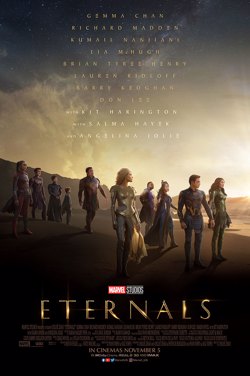
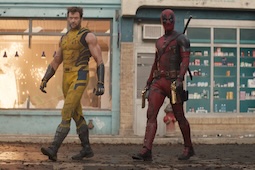
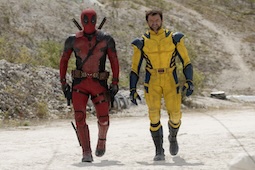
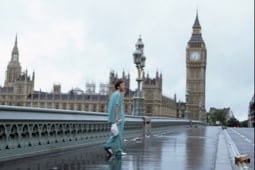
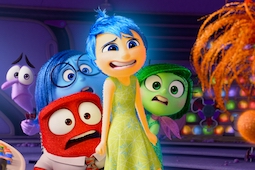

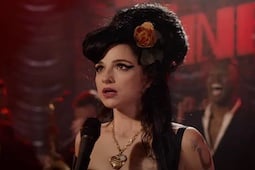
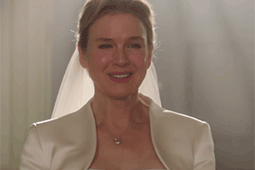
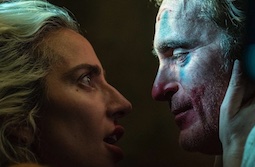


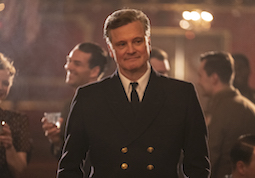
.jpg)


.jpg)
.png)






